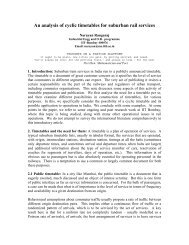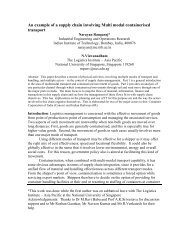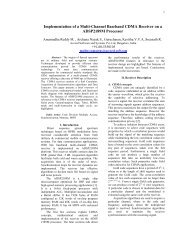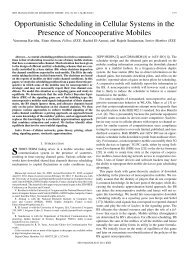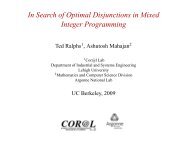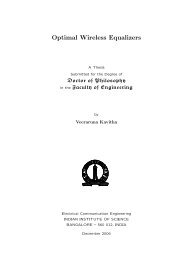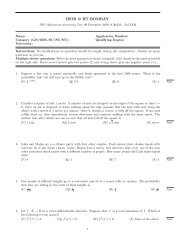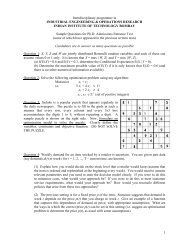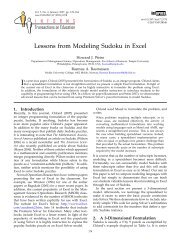A Monte Carlo Approach to Currency Risk Minimization - IEOR @IIT ...
A Monte Carlo Approach to Currency Risk Minimization - IEOR @IIT ...
A Monte Carlo Approach to Currency Risk Minimization - IEOR @IIT ...
Create successful ePaper yourself
Turn your PDF publications into a flip-book with our unique Google optimized e-Paper software.
or more and indicates a level of confidence), and the expected tail loss or ConditionalValue-at-<strong>Risk</strong> (CVaR). The mathematical expressions for VaR(ψ T ) and CVaR(ψ T ) aremore involved and hence we refer the reader <strong>to</strong> Alexander (2009); Dowd (2005); Jorion(2006) for a detailed study of VaR and CVaR.Notethateachofthesemeasureshavetheirownadvantagesanddisadvantages. Hence,one should look at more than one risk measure <strong>to</strong> assess the risk. If the risk measures arenot within allowable limits with no hedging then we have <strong>to</strong> consider (static or dynamic)hedging <strong>to</strong> minimize the risk. In the subsequent sections, we provide details of static anddynamic hedging.3. Static HedgingIn this paper, we consider only those hedging strategies that involve setting up a hedgingportfolio of liquid Forward FX contracts. If the company is expecting N units of FC andan obligation of NB units of HC at time T and the risk due <strong>to</strong> X T is beyond allowablelimits then the company has <strong>to</strong> employ a hedging strategy. In this section, we considerthe static hedging case where the company invests only once (at time T 0 ) in a forward FXcontract. The company has a choice of i) covering all the N units of FC, that is, enteringin<strong>to</strong> N forward contracts each of unit value, ii) covering none of the FC (though this isno hedging, it is technically a (trivial) static hedging strategy), or iii) or cover ζ 0 units ofFC. The determination of the decision variable ζ 0 (whether 0, N, or some other number)is the problem of static hedging. The objective is <strong>to</strong> minimize the risk where the P & Lwill take the formψ T = N(X T −B)+ζ 0 (F 0,T −X T ), (2)where the first term in (2) is the same as P & L expression (1) in the no hedging casewhile the second term is the P & L coming from the forward contracts. Here, F 0,T denotethe forward FX price (or forward rate) of a forward contract which is initiated at timeT 0 and matures at future date T. For simplicity it is assumed that there are no bid-askspreads in the forward contract quotes and there are no transaction costs or cost-<strong>to</strong>-carryin trading these contracts. Some of the regula<strong>to</strong>ry requirements that enforce constraintson over-hedging and under-hedging position limits are also ignored.In a given static hedging strategy the company is buying ζ 0 units of the forwardcontract atF 0,T . Thisarrangement allowsthecompany <strong>to</strong>sell FCcurrency atanexchangerate of F 0,T at time T. By locking in<strong>to</strong> a forward contract <strong>to</strong> sell FC, the company sets afuture exchange rate without any additional cost. Any remaining N −ζ 0 units of FC isthen exchanged at T (at spot rate).One way of determining ζ 0 is <strong>to</strong> proportionally cover FC based on an estimate ofprobability that X T is lower than the budget rate B. Since the case of X T < B results ina loss it may be appropriate <strong>to</strong> cover p 0 N units of FC, where p 0 is the probability suchthat X T < B. The strategy where ζ 0 = p 0 N is called static proportional strategy.Here, we propose a static hedging strategy based on an optimal hedging problem.Specifically, let ρ(ψ T ) denote a risk metric (perhaps, E(ψ T |ψ T < 0) or P(ψ T |ψ T < 0)or CVaR(Ψ T )) which in turn depends on ζ 0 . Now, consider the following optimization4




